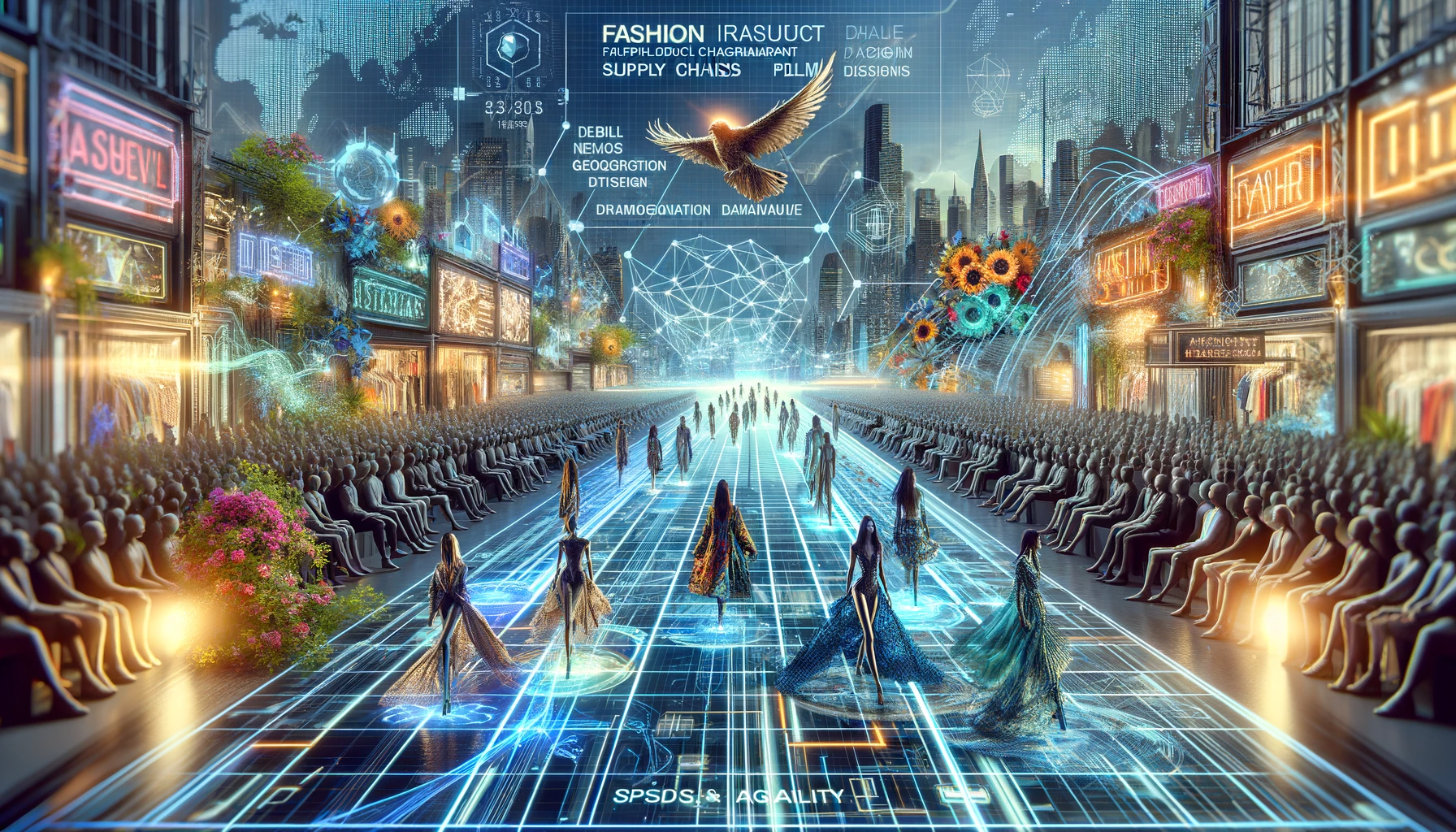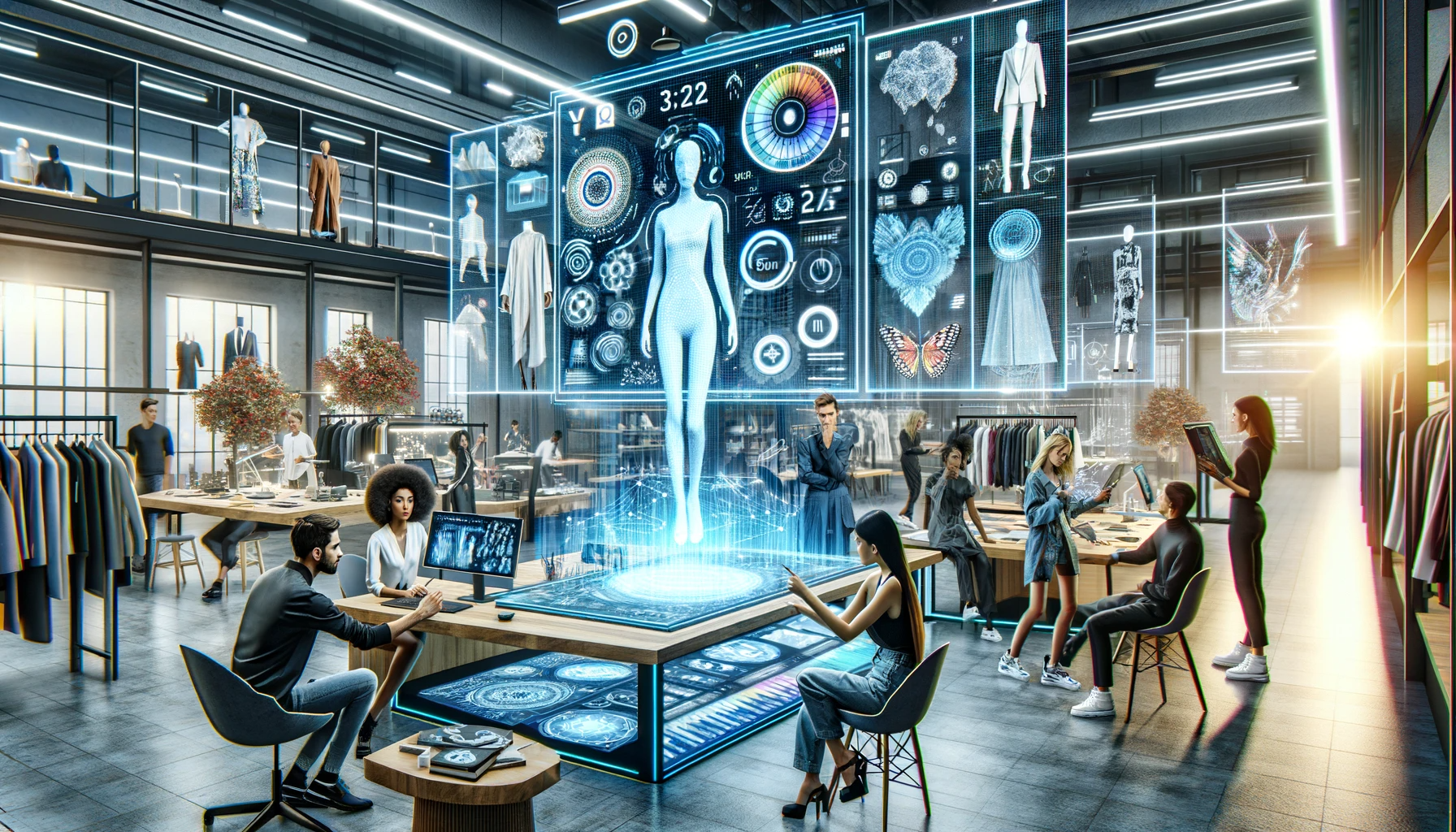BY CHRIS JONES | DECEMBER 05, 2023 | 5 MINUTE READ
In the ever-evolving world of fashion, speed is of the essence. Consumers today expect new styles and trends to hit the market faster than ever before, and fashion brands must keep up to stay competitive. Yet, this is not the only significant challenge. The supply chain is subject to increasingly regular disruptions from geopolitical incidents and climate-induced disasters that require brands to develop the agility to switch to alternate supply options at a moment’s notice to maintain planned assortment inventory. To achieve this, fashion companies are turning to Fashion Product Lifecycle Management (PLM) systems as a strategic tool at the hub of connected enterprise and supply chain solutions to accelerate their time-to-market and improve overall agility. This article will explore how Fashion PLM can empower brands to shorten product development cycles, swiftly respond to shifting market trends, and maintain a competitive edge in the fashion industry.

powered by DALL·E 3
Shortening Product Development Cycles
Fashion PLM's core and originating purpose is the management of product development, where it plays a pivotal role in streamlining and expediting the process. Traditionally, fashion brands managed various design iterations, sample approvals, and communication with suppliers through disjointed systems and manual processes, often leading to delays.
With Fashion PLM, brands now centralise all product-related data, from initial design concepts to manufacturing specifications, in a collaborative platform. This facilitates efficient cross-functional communication and collaboration, reducing the time spent on back-and-forth information exchanges. Designers, product developers, merchandisers, and suppliers can work seamlessly, access real-time data, and make quicker decisions. As a result, the time it takes to bring a product from concept to market can be significantly reduced, enhancing the brand's speed-to-market capabilities.
Responding Quickly to Changing Market Trends and Supply Chain Disruption
In the fast-paced fashion industry, trends come and go in the blink of an eye. Brands must have the agility to pivot and adapt their product offerings in response to emerging trends or shifts in consumer preferences. Fashion PLM equips brands with the centralised data and tools to stay ahead of these changes.
Fashion PLM enables brands to monitor market trends and consumer feedback more effectively. By integrating real-time data analytics and market intelligence into the PLM system, brands can track the performance of their products and identify emerging trends. This data-driven approach allows brands to make informed decisions on which styles to prioritise, ensuring that they respond quickly to market demands.
Boosting Merchandising and Design Cycles with Generative AI
Generative AI is a well-known tool many people use, such as ChatGPT. However, using a generic tool like this can create security and legal risks for companies. Additionally, it requires a certain level of skill to enter prompts and generate the exact output needed.
Fortunately, industry-specific GenAI tools are now available for fashion merchandising and design processes. These tools address security and legal concerns while providing an intuitive user interface. The brand's design team can train the model with products and the brand's "design language" to apply to concepts and product options. Multiple additional models can also be included to manage trends and other licensed data, models, celebrity partnerships, poses, and locations.
The Generative AI tool can replace weeks of low-value tasks by quickly generating suggested concepts, products, patterns, and prints using photo-realistic images. This allows your merchandising and design teams to focus on exploring their valuable creative ideas. The Generative AI user interface supports real-time collaboration, enabling faster and more effective decision-making. Brands that use this technology can bypass many low-value tasks and entire process steps, resulting in faster speed to market with improved products. Moreover, the tool eliminates the need for physical samples until the fitting and pre-production stage, with reduced colourway requirements, further streamlining the process.

powered by DALL·E 3
Finessing Concepts with 3D Virtual Prototyping
Although Generative AI can enable very rapid generative of on-trend options, exploration of ideas, and significantly more effective collaborative decision-making, sometimes, complex products require further finessing before final selection. The digital capabilities of PLM, such as integration with 3D tools to support virtual prototyping, allow brands to finalise and validate designs rapidly. As with Generative AI during the Merchandising and Design cycles, this reduces the need for physical samples. However, the more rigorous ‘engineering’ during 3D development also shortens the development phase. Brands can technically adapt their designs swiftly based on feedback and trends, getting ahead of the competition with innovative, on-trend, and technically superior products.
Maintaining a Competitive Edge
Staying ahead is essential for long-term success in the highly competitive fashion industry. An integrated Fashion PLM solution helps brands maintain a competitive edge by enabling them to focus on innovation, quality, and efficiency.
By automating time-consuming administrative tasks and improving collaboration, tools like Fashion PLM and Generative AI free up valuable time and resources that can be invested in creative design, research and development, and quality control. Brands can dedicate more effort to crafting unique and compelling products that set them apart from competitors.
Additionally, the ability to streamline the supply chain and optimise manufacturing processes through Fashion PLM results in cost savings, which can be reinvested in research and development or marketing efforts to strengthen the brand's competitive position further.

powered by DALL·E 3
Conclusion
In today's fashion industry, where speed and agility are paramount, tools such as Fashion PLM and Generative AI emerge as critical tools for brands seeking to shorten product development cycles, swiftly respond to market trends, and maintain a competitive edge. By centralising data, streamlining processes, removing low-value tasks, improving collaboration, and harnessing digital technologies, Fashion PLM and Generative AI empower brands to adapt to the fast-paced nature of fashion and the challenging nature of its supply chain, ensuring they meet consumer demands and secure their place in the market. As the industry continues to evolve, these tools are essential assets for brands aiming to thrive in the competitive world of fashion.
Author Chris Jones
Chris has helped global brands, retailers, and manufacturers align people, processes, and technology for over three decades, driving transformation projects to maximise business impact.
This article is also published on LinkedIn: Revolutionising Fashion: Harnessing Fashion PLM and Generative AI for Speed, Agility, and Market Dominance (www.linkedin.com)


